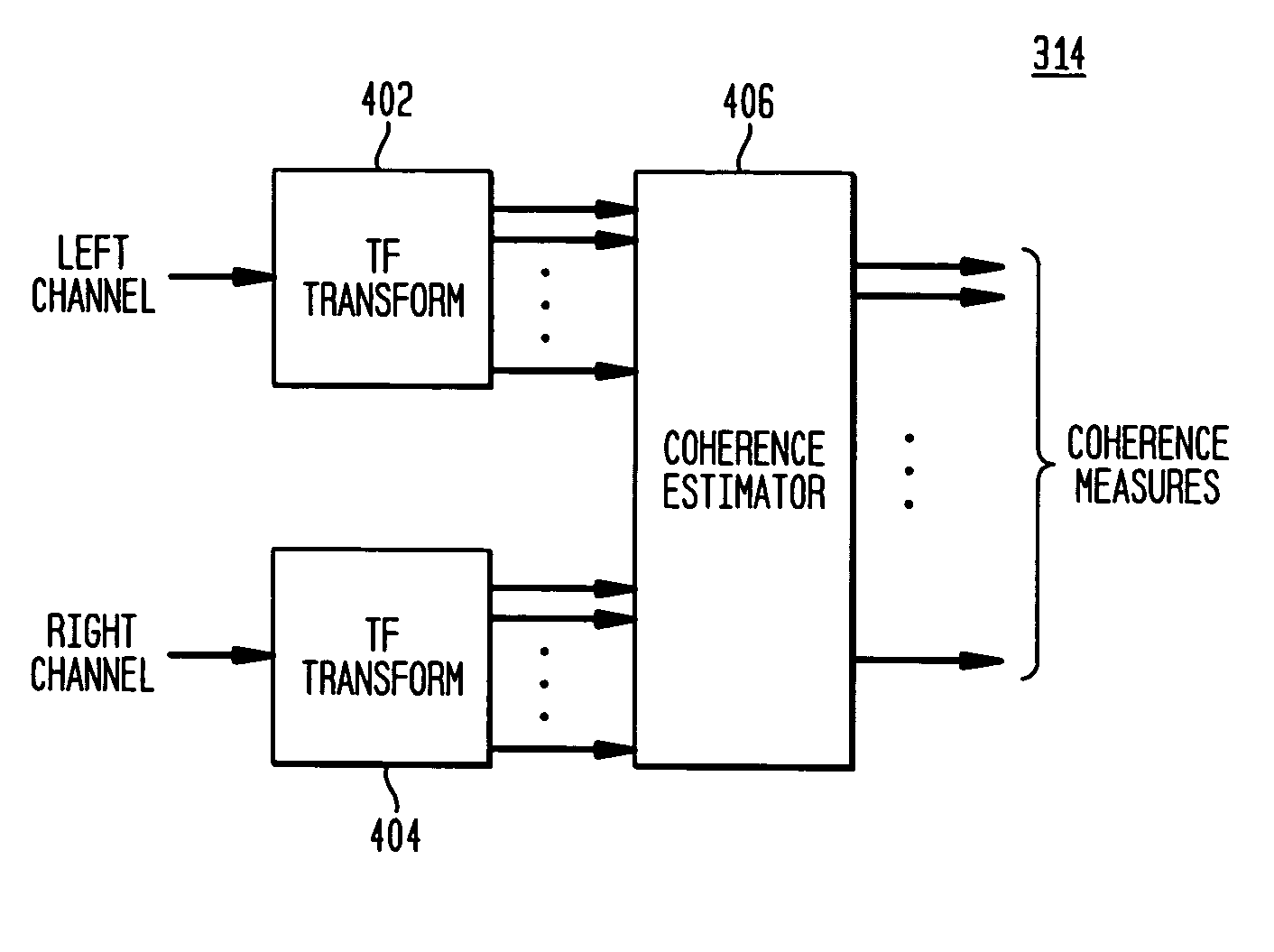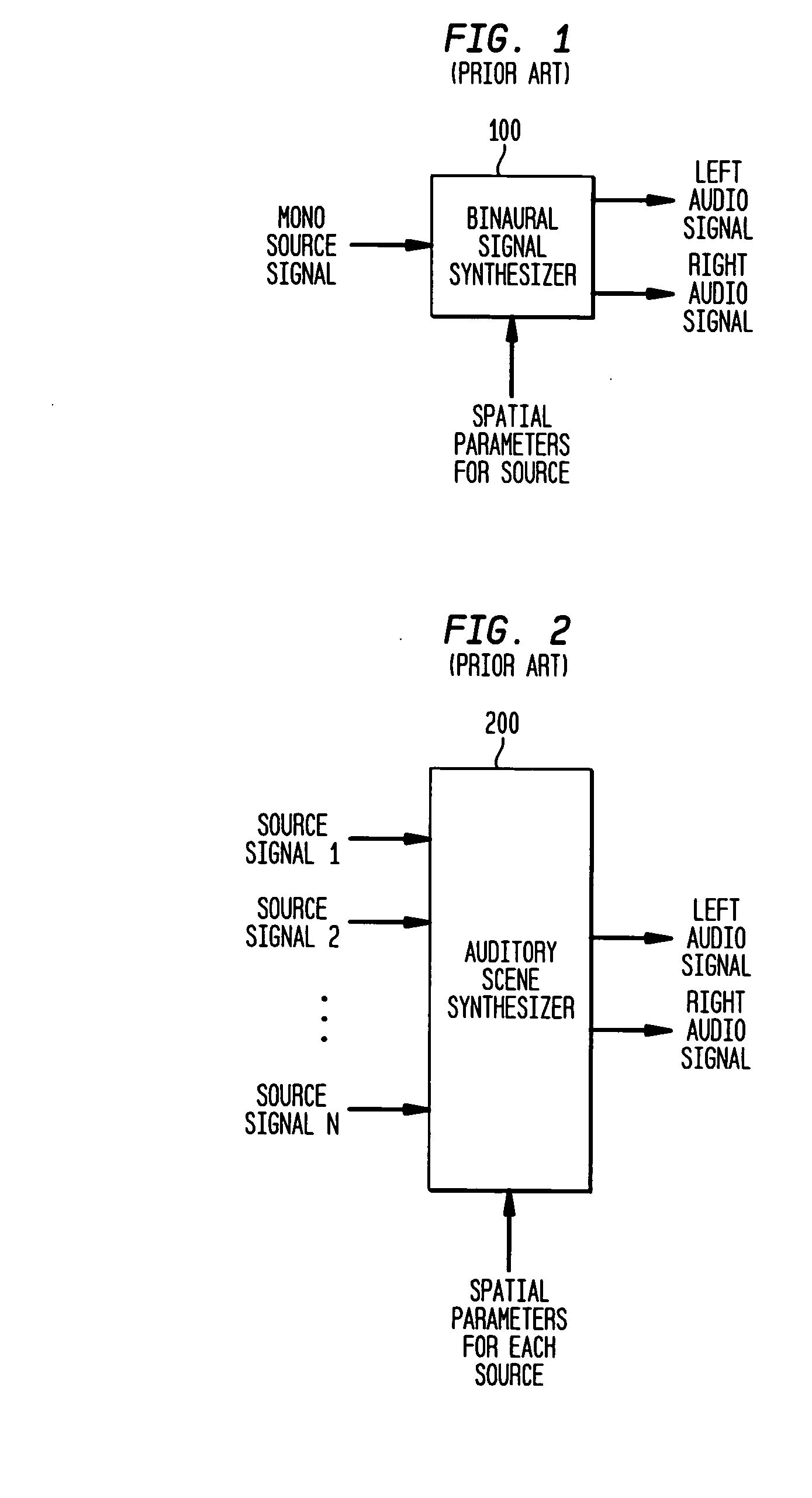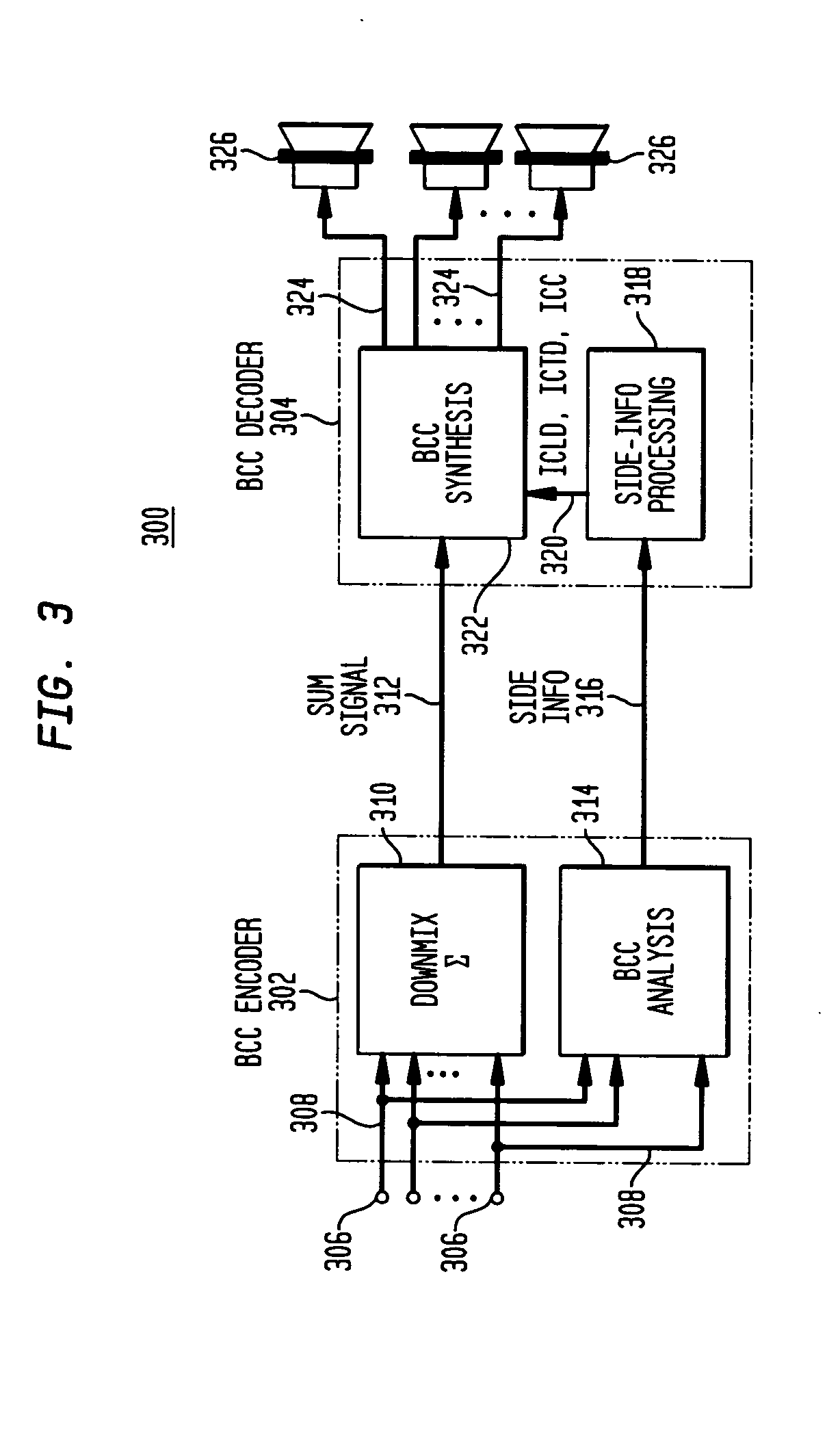Late reverberation-based synthesis of auditory scenes
a synthesis and auditory scene technology, applied in the field of late reverberation-based synthesis of auditory scenes, to achieve the effect of reducing transmission bandwidth requirements
- Summary
- Abstract
- Description
- Claims
- Application Information
AI Technical Summary
Benefits of technology
Problems solved by technology
Method used
Image
Examples
Embodiment Construction
BCC-Based Audio Processing
[0037]FIG. 3 shows a block diagram of an audio processing system 300 that performs binaural cue coding (BCC). BCC system 300 has a BCC encoder 302 that receives C audio input channels 308, one from each of C different microphones 306, for example, distributed at different positions within a concert hall. BCC encoder 302 has a downmixer 310, which converts (e.g., averages) the C audio input channels into one or more, but fewer than C, combined channels 312. In addition, BCC encoder 302 has a BCC analyzer 314, which generates BCC cue code data stream 316 for the C input channels.
[0038] In one possible implementation, the BCC cue codes include inter-channel level difference (ICLD), inter-channel time difference (ICTD), and inter-channel correlation (ICC) data for each input channel. BCC analyzer 314 preferably performs band-based processing analogous to that described in the '877 and '458 applications to generate ICLD and ICTD data for each of one or more dif...
PUM
 Login to View More
Login to View More Abstract
Description
Claims
Application Information
 Login to View More
Login to View More - R&D
- Intellectual Property
- Life Sciences
- Materials
- Tech Scout
- Unparalleled Data Quality
- Higher Quality Content
- 60% Fewer Hallucinations
Browse by: Latest US Patents, China's latest patents, Technical Efficacy Thesaurus, Application Domain, Technology Topic, Popular Technical Reports.
© 2025 PatSnap. All rights reserved.Legal|Privacy policy|Modern Slavery Act Transparency Statement|Sitemap|About US| Contact US: help@patsnap.com



